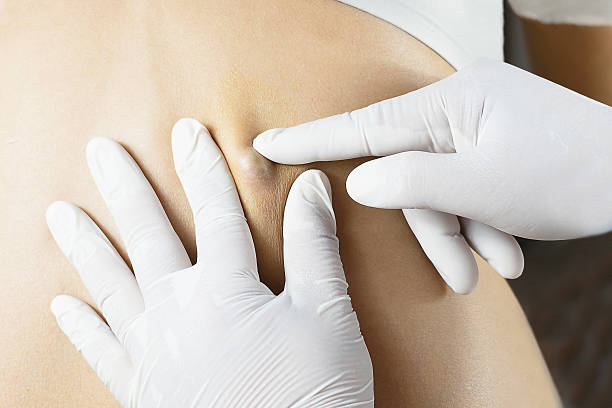Cysts are sac-like structures that can develop in various parts of the body and contain fluid, semisolid, or gaseous substances. They can occur in many different parts of the body, including the skin, ovaries, and kidneys, and can range in size from small, pea-sized bumps to large, fluid-filled sacs.
The symptoms of cysts vary depending on the location and size of the cyst, as well as the type of substance that it contains. Some common symptoms of cysts include:
Swelling or bump: The most noticeable symptom of a cyst is often a swelling or bump that feels soft to the touch.
Pain: Cysts can cause pain or discomfort, especially if they are located near a sensitive area or if they become infected.
Tenderness: The area around a cyst may be tender to the touch.
Redness or warmth: If a cyst becomes infected, it may cause redness or warmth in the surrounding area.
Discharge: Some cysts may secrete fluid or other substances that can lead to discharge.
Treatment for cysts varies depending on the type, size, and location of the cyst, as well as the symptoms that it is causing. Some common treatment options for cysts include:
Observation: Small, asymptomatic cysts may not require any treatment and can be monitored over time.
Drainage: If a cyst is causing discomfort or pain, draining the fluid or other substance from the cyst can provide relief.
Antibiotics: If a cyst becomes infected, antibiotics may be necessary to treat the infection.
Surgical removal: In some cases, cysts may need to be surgically removed, especially if they are large, causing discomfort, or growing rapidly.
Hormonal therapy: Hormonal therapy may be recommended for women with cysts in the ovaries, as it can help to shrink or eliminate the cyst.
It is important to remember that cysts are relatively common and are typically not dangerous. However, if a cyst becomes infected, is causing discomfort or pain, or is growing rapidly, it is important to seek medical attention. With proper diagnosis and treatment, most cysts can be successfully managed, allowing people to return to their normal activities as soon as possible.
In conclusion, cysts are sac-like structures that can occur in many different parts of the body and can range in size from small, pea-sized bumps to large, fluid-filled sacs. The symptoms of cysts vary depending on the location and size of the cyst, as well as the type of substance that it contains, and can include swelling or bump, pain, tenderness, redness or warmth, and discharge. Treatment for cysts varies depending on the type, size, and location of the cyst, as well as the symptoms that it is causing and can include observation, drainage, antibiotics, surgical removal, or hormonal therapy. If a cyst becomes infected, is causing discomfort or pain, or is growing rapidly, it is important to seek medical attention.

 Home
Home Health
Health Diet & Nutrition
Diet & Nutrition Living Well
Living Well More
More












